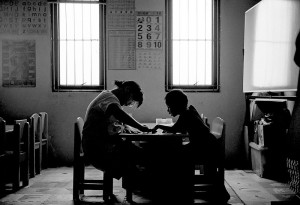
As a graduate from college, I have received more than 15 years’ formal education in China, ranging from primary, secondary to higher education. On my way of intellectual growth, what impresses me most is a variety of pop quizzes, midterms, finals, and national exams. As our abilities are most measured by exams results in the present education situation, the exam form and effectiveness are of great concern to me. If I could make some change, I would suggest that the multiple-choice test should not be widely used at school.
First of all, the multiple-choice test makes it convenient for students to cheat. When students just need to answer by checking a few letters or drawing a few circles, students can copy their neighbors’ answer with much ease. Even if teachers separate them at much distance, students can still invent secret codes to pass the message. For example, some students used to admit that they have made such a system: touching forehand means A, touching eyes means B, touching nose means C, and touching mouth or chins means D. There is no sense in giving a test if students can share their answers so easily.
Secondly, the multiple-choice test encourages guessing. According to the law of possibility, if there are four choices for a question, then the probability of getting the right answer by random guessing will be as high as 25 percent. Even if a person is absolutely ignorant of the knowledge of that subject, when taking the multiple-choice test, he will possibly get around 25 percent of right answers only by guessing. What is more, sometimes the teachers who are not so well trained in designing test papers may use some choices that are obviously wrong, and this makes the guessing even easier. Because of this characteristic, some students just rely on luck instead of hard work to pass exam. A test is equally meaningless if it turns students into opportunists rather than learners.
Lastly and most importantly, the multiple-choice test cannot access many of the important skills that are taught. Because it just requires students to make choices, this test form can only evaluate students’ ability to recognize certain information, but not their ability to analyze and produce information. But the latter skills are just equally, if not more, important than the skill of telling right from wrong. So, a high score in multiple-choice test does not guarantee real great ability in solving real problems. With such a short-coming, we may again question the frequent use of this test format.
Admittedly, the multiple-choice test can bring us scoring efficiency and accuracy, but the above analysis indicates that it is neither flawless nor effective in many ways. Therefore, we should remember its defects and limit the use of it so that students can be fairy and scientifically evaluated.




